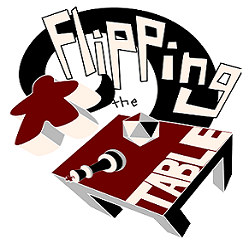War. War never changes. We know that all too well, but this time feels so much more real. Maybe because I wasn't there for the bombs in Hiroshima, for the Great War and it's consequences. Maybe it's because I have to deal with this, here and now. Or maybe it's because there's a spider crawling up my leg as I write this. That's life in the wasteland, in the world of Nuclear Fallout.
BACKGROUND: Fallout is a Strategy board game for 1-4 players. It is based on the 2015 game,
Fallout 4. It was designed by Andrew Fischer and Nathan I. Hajek, and published by Fantasy Flight Games. Players align with various groups to battle against their rivals and the wasteland itself, to become the best faction and rule the wasteland.
GAMEPLAY: Each player has 2 actions they can take on their turn:
- EXPLORE: Flip over a tile face-down Map tile when on an adjacent space.
- MOVE: Gain 2 movement points. A Movement point is used to move the player to an adjacent spot, seperated by white lines. Difficult terrain, marked by a red line, requires spending 2 movement points. (These can be used during or after any action during the players turn.)
- ENCOUNTER: If the players location has either a Wasteland or Encounter icon, they can choose to have the next player draw from the matching deck and read the text in italic and next to each number. Once the player chooses which number they want/can fulfill, the reading player reads their result under the chosen text.
- QUEST: Some Objectives require the player to take this action to complete. Whenever an Objective is fulfilled, the player takes the rewards from underneath, and reveals a new one at the end of the turn.
- FIGHT: If a player is in a space with a face-up enemy, or in an adjacent while they have a ranged weapon, they may choose to fight it.
- CAMP: The player heals 3 HP, Unexhausts all items, and gains a Well-Rested trait, to spend to reroll for a test or battle.

COMBAT: When a player Fights, they roll the 3 VATS dice, attempting to roll the matching body parts indicated on the enemy token. However, any stars, or Hits, deal that much damage to the player. If the weapon the player is using has a SPECIAL letter, and the player has that letter, they may reroll. If the number of dice hit the enemy is equal to its level, indicated in the green gear, the enemy is defeated, the player gains XP on their board equal to its level, and a new enemy is placed face-down on the original starting space of that enemy.
LEVEL: Once the XP peg reaches the end of the board, it goes back to the beginning (adding remaining XP), and the player draws two new random SPECIAL letters, keeping only one. If it's one the player already has, they draw a one shot Perk card indicated by the letter they kept.
ENEMIES: Once all players have taken their 2 actions, a player draws an Agenda card. The symbols on the bottom of the card activates all matching face-up enemies, and flip over all face-down enemies face-up. Any activated enemy moves a space closer to the nearest adventurer. Any activated enemy in a space with a player fights them.
TESTS: Some Encounters requires a player to do a test, indicated by SPECIAL letters and a number. The player rolls the VATS dice, attempting to get a number of Hits, equal to or higher thant he printed number. Any SPECIAL letters the player has on their board matching the letters printed lets the player re-roll any dice per matching letter.
DEATH: If at any point the green Rads and red Health marker at the bottom of a players board meet, then the player's figure is placed on the Crossroads Camp space. Their Health goes back up to full, while their Rads stays the same, and they discard all non-equipped inventory cards. If a players Rads are at the highest point, they lose the game and are eliminated.
WINNING: The game ends if any Faction reaches the end of their track, or if any player reaches the goal on their private Agenda card.
CONCLUSION: Fallout is an incredibly detailed game, faithful to its source material. However, just like Dark Souls, that dedication to theme leads to a mechanically clunky and slow game. Even when playing with people who try to make the most out of their turn and plan on other players turns, it takes a while due to combat, and tests. That is not to say it is a bad game, but that it merely appeals specifically to fans of Fallout, such as the Dark Souls game appeals to its player base. If you are such a fan, try it out, see what you think. Anyone else, this is one Fallout you're best avoiding.










